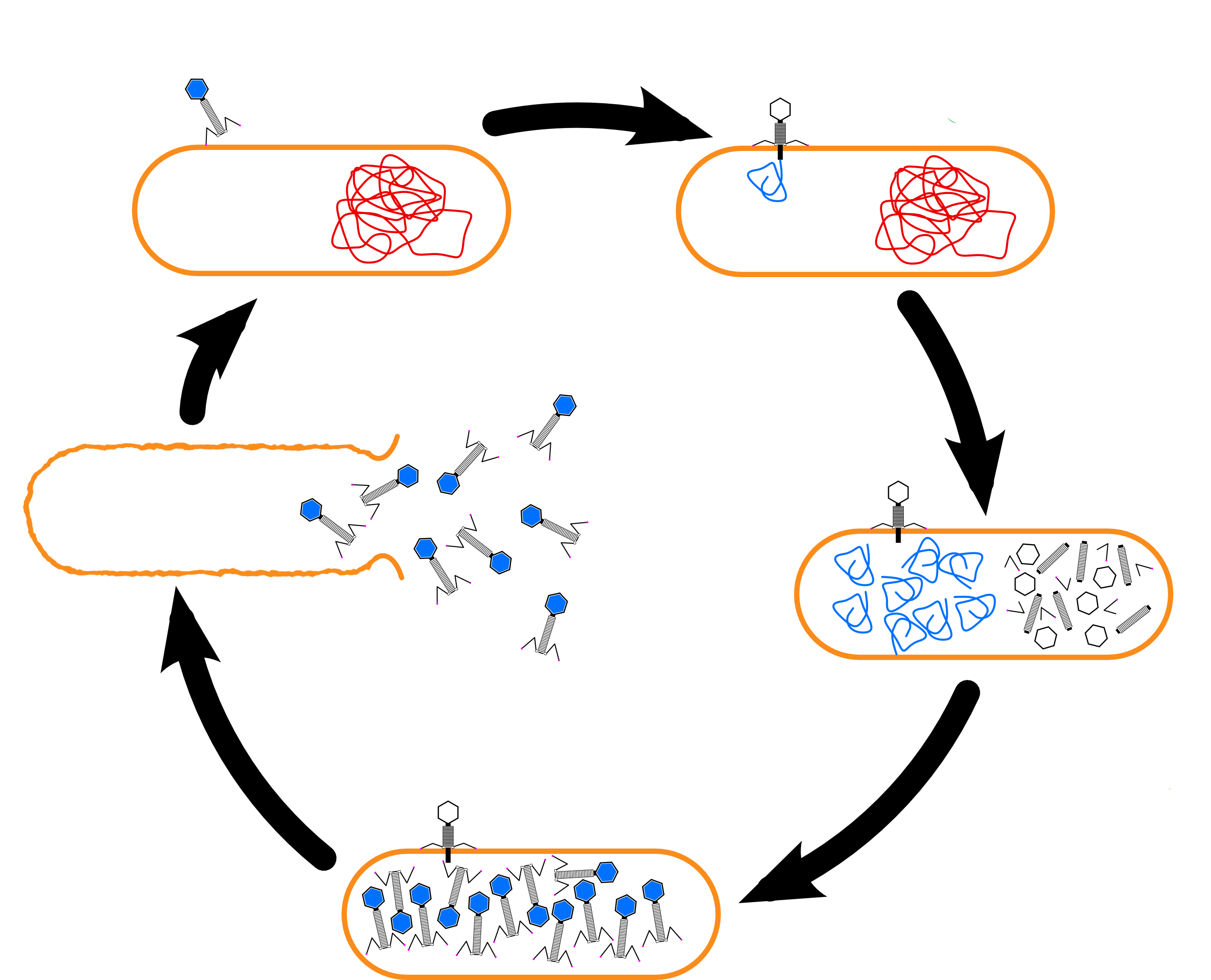What are phages?
Phages are viruses. Like all viruses, they do not have their own metabolism and require the energy and cellular machinery provided by a host cell to replicate. In the case of phages, the host cells are bacteria. Phages are very specific for particular host cells, a reflection of the diversity of bacteria and the necessity for the phages to adapt to successfully infect them. Thus phages that infect E. coli are unlikely to be able to infect Staphylococcus aureus, and vice-versa. Typically, phages will only infect a subset of strains within a bacterial species.
Most bacteriophages are composed of only proteins and DNA. The proteins form a protective shell, or capsid, that surrounds the phage’s DNA, which is the entirety of the phage’s genetic material, or genome. The protein capsid is responsible for protecting the phage DNA and for finding a new host cell that it can infect. In the case of the tailed phages that we study, recognizing a new host is accomplished by tail fibers at the base of the phage tail, which bind specifically to features on the bacterial cell surface. As shown in the figure below, phages use the host cell to produce progeny phages, killing the host in the process. Phages typically release 50-200 progeny per infected cell.

Life cycle of a virulent phage.
Phages initiate their life cycle by attaching to a host cell (top left). The phage DNA (blue) is then translocated from the head through the hollow tail and into the host cell. This DNA directs the host to produce new phage virions, often destroying the host chromosome (red) in the process. At a time determined by the phage, the host cell explosively decompresses, or lyses, releasing the progeny phage into the environment to continue the cycle.
